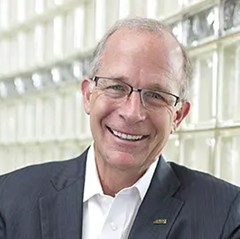
Total undergraduate enrollment dropped 3.1 percent from the fall of 2020 to the fall of 2021, bringing the total decline since the fall of 2019 to 6.6 percent. That is the equivalent of 1.2 million students. In response, higher ed leaders are searching for innovative ways to enhance their school’s value and grow enrollment.
Faced with headwinds, college leadership teams are tasked with coming up with the next new thing. A rebranded website, a catchy slogan, revamped tuition discounting, or a scholarship giveaway. However, while creativity is important to remain competitive, I have also found that the best creative answers often start by recalibrating with an obvious question – what do students want most from their college experience?
Answering the question: What do students want?
Our colleges have long offered students what they can’t get through any other outlet: the opportunity to move to a campus, make lifelong connections, and immerse themselves in a caring, engaged community.
The quintessential college experience is still in demand. Students still look for the on-campus and in-person social activities, the late nights in the library, and the social capital developed in a tight-knit community.
Yet, what unites all students—from the 18-year-old to the non-traditional working adult—is the desire to earn a future-proofed education with opportunities after graduation. They want the preparation and skills training that will ensure a lucrative, rewarding career. To put it simply, they want great jobs at a reasonable price.
Giving students what they want goes hand in hand with what employers are looking for. Staying agile and adapting to change is vital for survival, but many of our Liberal Arts colleges haven’t evolved to keep pace with the technology-based careers of today. The highly sought-after jobs in today’s workplace are the result of continuous innovation in fields such as technology, health care, and applied science. These industries are evolving quickly and so are the skills needed for careers in these industries. Unfortunately, the challenges of starting new academic programs, including significant cost and risk, have prevented many of our colleges from developing and delivering the curriculum that prepares students for great jobs.
To successfully navigate the enrollment headwinds of the future and provide a differentiated experience, liberal arts colleges need to find ways to offer both a compelling on-campus experience (whether residential or non-residential) and the degrees that lead to fulfilling careers by offering both an expansive liberal arts education and high-tech skills.
The future of higher ed is hybrid
I believe a “hybrid campus” is a key part of the answer to giving students what they want. The hybrid campus can take many forms, but generally speaking, it is a college or university that provides courses and services using a blend of online and face-to-face delivery.
As COVID has shown us quite clearly, students will continue to value the on-campus experience, but online learning and services will allow colleges to provide students with more majors and more career opportunities at a reduced price.
In other words, effectively blending online and face-to-face instruction can enhance the quality of degrees for all types of learners while decreasing the cost of attendance. It offers a robust, faculty-supported, student-centered learning framework that blends the best practices of traditional higher ed with modern technology—a winning formula for the new hires of tomorrow.
How does a hybrid learning model allow colleges to offer more at a lower price? It breaks down the barriers and constraints that are erected by physical location. Online learning can allow colleges to expand their instructor pool, form networks with corporations, share curriculum with peer institutions as well as build and deliver new academic programs at a reduced cost.
In the same day, a student may attend an in-person seminar with a group of peers, log on to an online course that is led by an experienced instructor from another campus and then head to a networking event with local companies looking for talent. Hybrid campuses break down the barriers of physical location while simultaneously leveraging locality as a differentiator.
The best of both worlds
As with most things, the answer rarely lies on the extreme ends of the spectrum. Campus leaders should continue to assess the value they provide to students and whether online or in-person delivery optimizes that value.
A hybrid campus model would maintain the unique benefits of attending a small liberal arts college while also using online learning to more quickly introduce areas of study that prepare students for the jobs today’s workplace needs to fill. It would be a marriage of traditional learning and virtual classes, and a marriage between current college professors and those in industries who have a first-hand understanding of what students need to know to be successful.
It’s only through this crossbreed of options that will we give students the best of both worlds. The future of liberal arts colleges is not in person or online, but an intelligent fusion of both modalities.
Jeffrey R. Docking has been president of Adrian College in Michigan since 2005. He is the author of Crisis in Higher Education: A Plan to Save Small Liberal Arts Colleges in America (2015) and The College of the Future: Lowering Costs for Students by Fixing the Business Model of Higher Education (2022). He can be reached at [email protected].
More from UB








